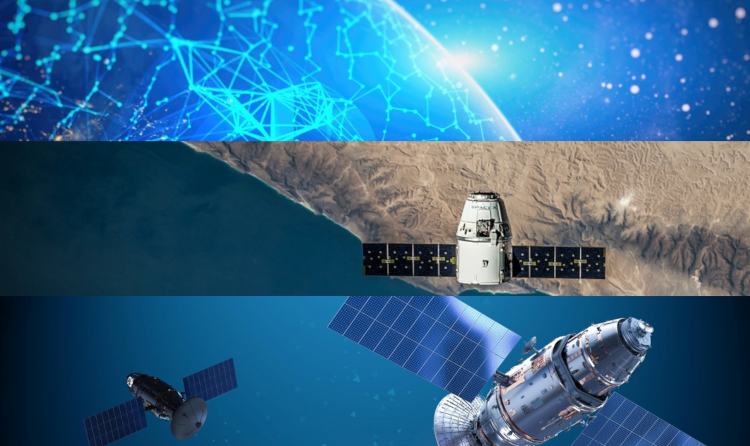
There is wide consensus across the space community that development and consolidation of advanced algorithms, regarded as an “enabling factor” for space engineering applications, is imperative (Girimonte & Izzo, 2007). In a paper published by the “Association for the Advancement of Artificial Intelligence”, the rise in the levels of autonomy and automation of space systems, borrowing algorithms from world of Artificial Intelligence (AI), was deemed as the necessary step for further advancements in space missions (Chien & Morris, 2014). Beyond the aerospace industry, AI is finding its way into most high-tech sectors, including automotive, logistics, and cybersecurity.
Machine learning algorithms that enable AI are a perfect fit for repetitive tasks like optimization, pattern recognition and data mining (KrishnaKumar, 2002): if a large set of data is provided, the overarching behaviour of a system can be discerned and exploited. For the space industry in particular, researchers believe that machine learning will enhance “greater autonomy to improve the duration, reliability, cost-effectiveness, and science return of space missions” (Mcgovern & Wagstaff, 2011). Autonomous systems that employ enhanced data mining and analysis are therefore a key research topic in the space industry. The time is ripe for such research to be conducted, given the rapid growth in compute available.
New opportunities on the horizon
The need for intelligent systems that are able to make optimal decisions, often in remote and hostile environments, is well understood by space agencies around the world (Chien & Morris, 2014). The major obstacle to the full implementation of machine learning algorithms in space systems is the lack of maturity and robustness in extreme operational conditions. For instance, as efforts are undertaken to bridge the gaps between the algorithms currently available and the high-reliability requirements necessary for space technologies, mission engineers are unwilling to risk million-dollar spacecraft by utilizing AI-based, adaptive control algorithms (ICML, 2003).
And rightfully so.
Only after concrete, testable predictions are verified and validated in lower-risk environments, can the migration towards AI-enabled autonomy of space systems be seriously considered.
It’s important to stress that the application of AI to space systems isn’t restricted to the classic cases of mission operations or scientific data analysis. As space systems become more complex, there is a similar trend to look towards machine learning algorithms to support the space mission design process, which is what we’re interested in at satsearch.
For instance, at the preliminary design stage, autonomous generation and assessment of design concepts can empower engineers to explore the search space further, possibly yielding solutions that exhibit greater robustness, incur lower costs, and offer greater transparency for design trade-offs. Unlike in an operational environment, during the design process there is greater room for experimentation with cutting-edge machine learning algorithms to support engineers.
A decision support system for engineering design is an attractive prospect (Girimonte & Izzo, 2007), given that machine learning algorithms are becoming more sophisticated. However, the effectiveness of such a system is dependent on the availability of good sources of information pertaining to the design process to train and execute the algorithms.
The added value of the satsearch platform
The benefits of the satsearch platform are not limited to advanced querying. A key area of research currently being pursued by our team is the use of our knowledge graph to power advanced, intelligent system design methods. By structuring supply chain information, our vision is to empower space engineers by automatically generating ranked design concepts, based on the preliminary requirements, constraints, and objectives for a given space mission.
The traditional design workflow typically requires the engineer to manually evaluate and select feasible design concepts that meet mission requirements. Time and effort can be saved by automating this process through the use of decision support systems that prune the design tree intelligently. The development of innovative machine learning algorithms that are able to identify and parse complex patterns within the design process is thus crucial. Advanced learning models that strive to capture human reasoning will enable engineers to focus on the most difficult parts of the design process, whilst relying on robust and transparent tools that help to identify optimal and robust design choices.
During the preliminary design phase, the engineer is usually faced with the iterative task of sizing system parameters (e.g., the dimensions of a reaction wheel) under requirements and restrictions (e.g., the required torque and maximum mass), to rapidly generate estimates to assess feasibility. Machine learning algorithms could be developed to mimic the complex design process undertaken by engineers, taking the form of an advanced optimization problem under complex constraints and requirements.
At satsearch, we are focussed on demonstrating the value of Data-Driven Design (D3) by enabling advanced learning algorithms to scan the satsearch supply chain knowledge graph, to rapidly assess the feasibility of commercially-available hardware choices. We are currently conducting research into Integrated Mission Design (IMD) – a methodology we coined to describe the approach of embedding supply chain information directly into engineering design tools – through a concrete design study that will be published later this year.
Currently, our internally study is focussed on the use of the satsearch knowledge graph for the design of the attitude control subsystem of a small satellite. The results will be published on this blog sometime after the summer.
Using AI for space mission design
Starting from the extensive archive of available supply chain information, constraint and requirement functions limit the feasible design choices.
The utilization of the satsearch knowledge graph by complex machine learning algorithms will save the subsystem engineer valuable time and effort during the preliminary design phase of a space system.
The core value added by the satsearch platform is thus as follows: the machine-readable format that we are developing to build a supply chain knowledge graph will enable AI-enabled systems to drastically improve the productivity of engineers, resulting in lower lifecycle costs, greater robustness, and ultimately fewer critical design errors.
